For a few years now, it’s been hard to pin down the strategy behind Samsung’s Fan Edition products. Ostensibly, they’re supposed to offer high-end features at a more affordable price. However, following the Galaxy S20 FE, most FE devices haven’t lived up to that promise. Whether it was the poor timing of the S21 FE or the boring hardware of the S23 FE, those phones never felt like the absolute steal the S20 FE was four years ago.
With the new Galaxy S24 FE ($650), Samsung is offering its cheapest entry into its Galaxy AI ecosystem. Unfortunately, a few hardware changes and a lot of AI aren’t enough to overcome an uncompetitive price.
With only a few hardware changes, AI features you can find elsewhere and a confusing price tag, Samsung’s Galaxy S24 FE doesn’t do enough to stand out in a competitive midrange market.
- Large 120Hz OLED display
- Speedy performance
- Seven years of software support
- Too expensive
- Signature AI features are forgettable
- The S24+ exists and is frequently on sale
Design and display
When I first took the S24 FE out of the box, I thought Samsung had left the design of the phone untouched. It turns out I was only half right. The new model features a display that is 0.3 inches larger than the S23 FE’s 6.4-inch one. In terms of size, that means the S24 FE is a much closer match to the S24+ than the S23 FE was to the S23+. I want you to keep the S24+ top of mind as you read through this review; The S24 FE is the phone Samsung wants you to consider if everything about the S24+ is appealing to you other than its $1,000 price.
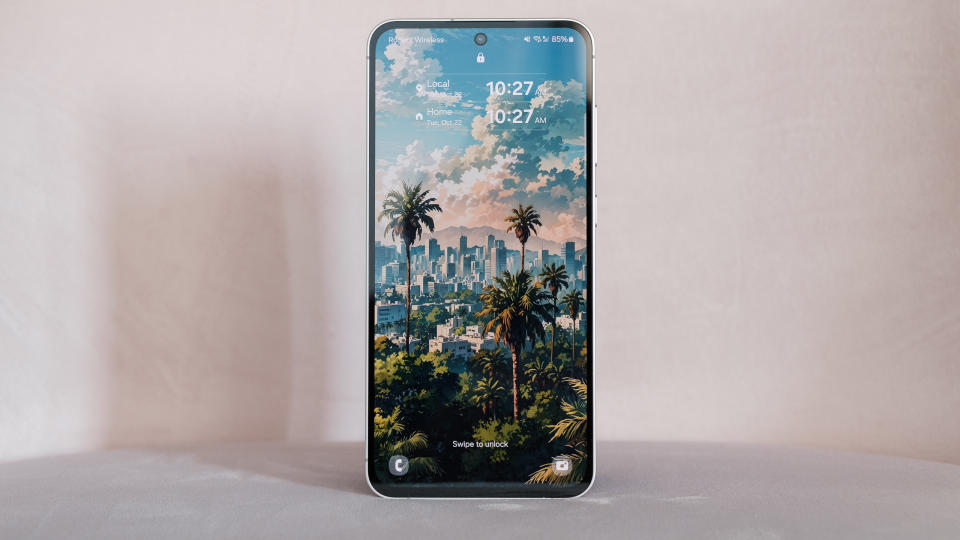
Like with the S23 FE, Samsung chose an AMOLED 2X panel that has an adaptive 120Hz refresh rate and 1080p resolution. In addition to being bigger, the S24 FE’s screen is brighter than the one on last year’s FE, offering close to 1,900 nits of peak brightness compared to 1,450 nits. The S24 FE is still missing the battery-saving LTPO tech found on Samsung’s flagship phones, but as far as screens on midrange phones go, the S24 FE easily has one of the best I’ve seen. I also think it’s the reason to buy the FE.
The display looks great, especially when scrolling through social media and playing games. It’s also easily legible in bright sunlight. Likewise, I found it was plenty sharp, despite having a lower resolution than the QHD screen on the S24+. It’s nice Samsung offers such a large display on a midrange device, but I’m not a fan of big phones. Obviously, personal preference will dictate if the FE’s girth is your thing, but those with smaller hands like me, consider this your warning: it’s not an easy phone to hold.
In North America, the S24 FE is available in four colors: blue (pictured), graphite, gray and a lovely mint. It might not be made of titanium, but I think the FE looks just as premium as its more expensive siblings. I also wouldn’t worry about its durability too much; the front and back of the phone are protected by Gorilla Glass Victus+, and the entire phone is IP68-certified against dust and water.

Cameras
I’ll be honest, I did not expect to like the S24 FE’s camera as much as I did. The new phone offers the same hardware as its predecessor. Specifically, it comes with a 50-megapixel, f/1.8 main camera; a 12MP, f/2.2 ultra-wide camera; an 8MP, f/2.4 telephoto camera and a 10MP selfie camera with f/2.4 lens.
The one addition here is the company’s ProVisual engine. It’s the first time Samsung has offered the software on one of its FE phones. Having not used last year’s model, I wasn’t able to directly compare the two devices.
So I did the next best thing: I compared the photos I snapped with the S24 FE to those I took with the last Samsung phone I reviewed, the Galaxy A53 5G. If I had to pinpoint a difference, it’s that the S24 FE did a better job of consistently nailing white balance and properly exposing dark scenes.
At the same time, Samsung’s image processing hasn’t dramatically changed over the last couple of years. There’s no mistaking the photos from the S24 FE came from a Samsung device. As you can see from the gallery below, nearly every image features bright and saturated colors.
Even as someone who’s not a fan of Samsung’s image processing, I had a lot of fun using the FE’s cameras. Of the three main ones, my favorite was the telephoto. Thanks to its 32-degree field of view, it gives you a 3x optical zoom over the FE’s main camera. That might not seem like much, but when most midrange phones, including the excellent Pixel 8a, don’t come with a telephoto camera, any bit of optical zoom makes it feel like you’re using a more premium product.
1 / 15
In the case of the FE, it’s a quality camera too, with a bright f/2.4 lens and built-in optical image stabilization. I’m usually not a fan of portrait modes on more affordable handsets like the S24 FE, but here I found it made sense since the compression from the telephoto lens leads to better subject separation. I ended up snapping a lot of portraits because the phone did a great job of rendering natural-looking skin tones and background blur.
The main camera is less of a standout. Thanks to that 50MP sensor, it can produce the most detailed images of the S24 FE’s cameras, but the autofocus wasn’t as fast as I would have liked. When I tried to get a closeup of something, such as my cat Celine, the camera took a few seconds to lock focus. However, outside of that, the S24 FE can take stunning photos. It’s no slouch in low light, either.
As for the 12MP ultra-wide, it was my least favorite of the FE’s cameras. Samsung’s image processing doesn’t do a great job of correcting for the fish-eye distortion produced by such a wide lens, so buildings and anything else captured in the periphery of the frame look misshapen. Photos look fine when zoomed out, but begin to look worse as soon as you start pixel-peeping. Part of the problem here is that Samsung didn’t update the ultra-wide camera to add autofocus, so not every shot comes out as sharp as it could be, despite the sensor offering a decent amount of resolution.
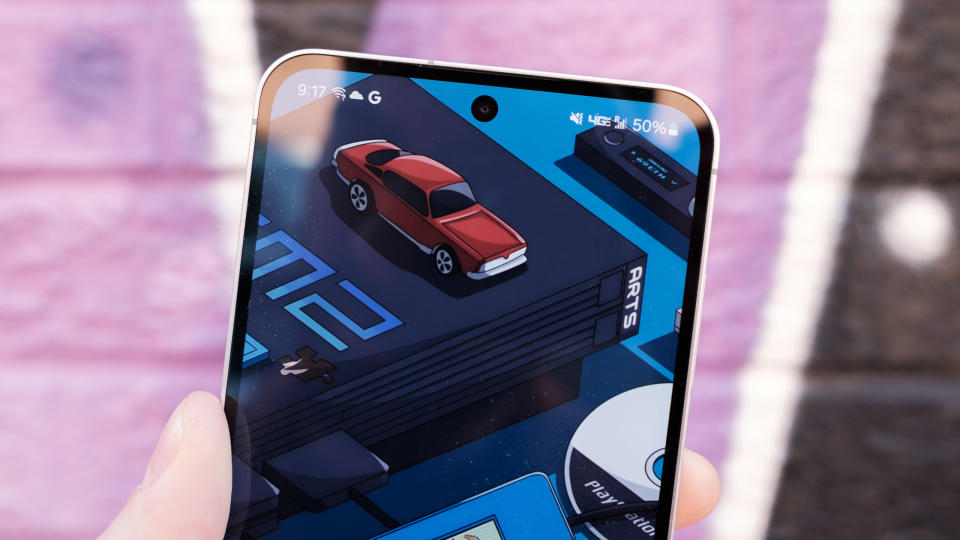
Speaking of autofocus, the selfie camera is missing that feature as well. It’s a shame because the FE has one of the better front-facing cameras I’ve used recently. It offers enough resolution to make selfies look detailed but not so much that every pore and blemish is rendered in painful detail. At the same time, the company seems to have toned down the overly aggressive skin smoothing it was known for in years past.
I mentioned the Pixel 8a earlier, and I think it’s worth returning to it for a moment. When my coworker Sam Rutherford pitted Google’s midrange handset against the Galaxy S24 Ultra, he found the two were surprisingly comparable when it came to camera performance. Despite costing $800 less, the Pixel 8a frequently produced photos with more accurate colors and superior detail. The S24 FE’s cameras perform a shade worse than their counterparts on the S24+. Unless you value the inclusion of a telephoto lens as much as I do, there’s a case to be made that the S24 FE doesn’t offer enough of an upgrade to warrant spending $650.

Performance
Thankfully, the S24 FE is not all small tweaks. Internally, the phone features Samsung’s new Exynos 2400e chipset. It’s the one processor the company is using for both US and international variants. I can already hear some of you groaning since Exynos chips have been known in the past for both poor performance and efficiency relative to their Qualcomm counterparts, so let me get straight to the good news: The 2400e is a powerhouse.
When I put the S24 FE through Geekbench 6, the chip delivered a single-core score of 2,140 and a multi-core performance of 6,690. To put those numbers in perspective, when my co-worker Sam did the same with the S24+ earlier this year, its flagship Snapdragon Gen 3 SoC performed better but not significantly so, posting scores of 2,284 and 7,003, respectively.
The Exynos 2400e was equally impressive in real-world use. Even though the FE only has 8GB of RAM at its disposal, I didn’t experience any hiccups scrolling through websites, switching between apps and other daily tasks. When it came to gaming, I could play Diablo Immortal with the game’s 60 fps mode enabled and graphics settings pushed to their max. I didn’t experience any hitching or dropped frames. I’ll mention here that Samsung redesigned the FE’s vapor chamber to make it bigger and thereby improve cooling. In my experience, the phone gets warm — but not hot — running graphically intensive games.
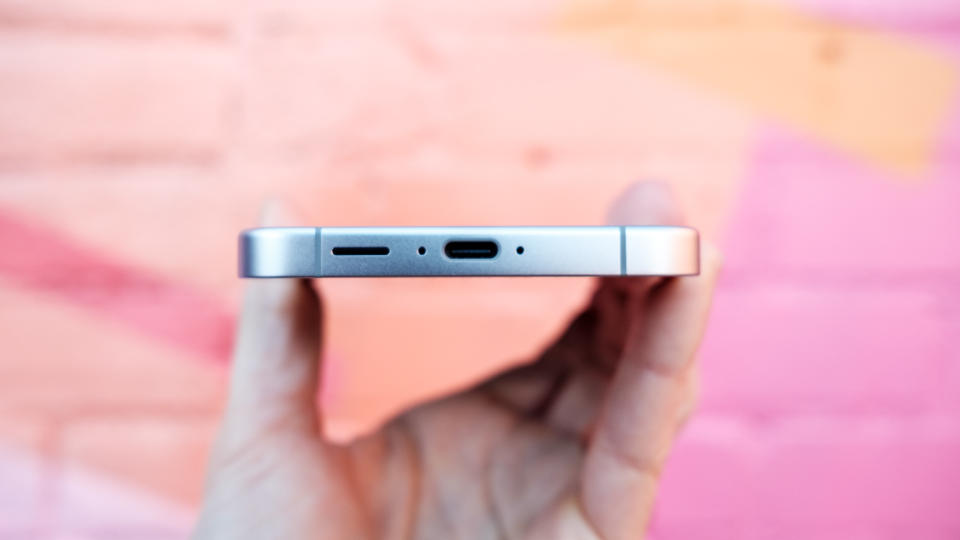
Battery
As I mentioned at the top, this year’s FE is bigger than its predecessor. Samsung has wisely used the extra space to include a larger 4,700mAh battery. Disappointingly, the company only made a minor change to the FE’s charging capabilities. Thanks to Qi2 support, wireless charging now tops off at 15W, up from 10W on the S23 FE. As for wired power delivery, the FE is still limited to 25W.
During one test, I left home at 8AM with the FE’s battery at 87 percent. For the next three hours, I used the phone to track a bike ride on Strava and snap photos along the way. When I got home, the battery was at 67 percent. I then went out for lunch with my partner, snapping plenty of photos along the way, and using the FE to surf the web and check social media. I later played an hour of Diablo Immortal for a total of three hours of screen time that day. Before bed, I had about 40 percent battery left. Samsung says the S24 FE can power long gaming sessions, and judging by what I saw, that’s accurate.
Charging the FE is far from an ideal experience. In my testing, it was possible to get the battery from zero to 50 percent in about 30 minutes. That’s in line with Samsung’s claims. However, charging to full takes substantially longer. It took close to 70 minutes to get a dead battery to 100 percent. Of course, this is assuming you own a compatible 25W fast charger. Did I mention Samsung doesn’t include a power adapter in the box? Yes, you’ll need your own. Otherwise, expect glacial charging speeds.
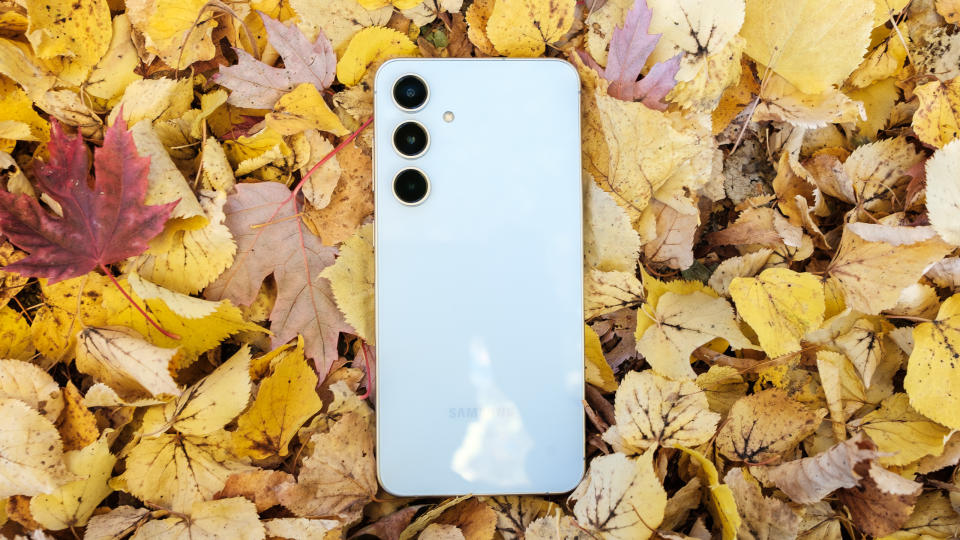
Software
I’ve spent a lot of words on the S24 FE’s hardware, but for Samsung, that’s not the story of this phone. The company wants you to see the new FE as a more affordable way to access its Galaxy AI tools. I won’t bore you with a review of the entire suite since Engadget has already covered what’s included.
What I will say is that all of the S24 FE’s AI features work well, but none of them are reasons I would go out and buy this phone for myself. Take Circle to Search, for instance. By long pressing the FE’s home button, you can bring up Google anywhere, including while scrolling through photos on Instagram and your camera roll. It’s then possible to search for a specific object by drawing a circle around it. So, the next time you spot a cute floof, you can confirm it was a Samoyed without leaving Google Photos. No need to switch between apps or try to figure out how to describe what you saw to Google.
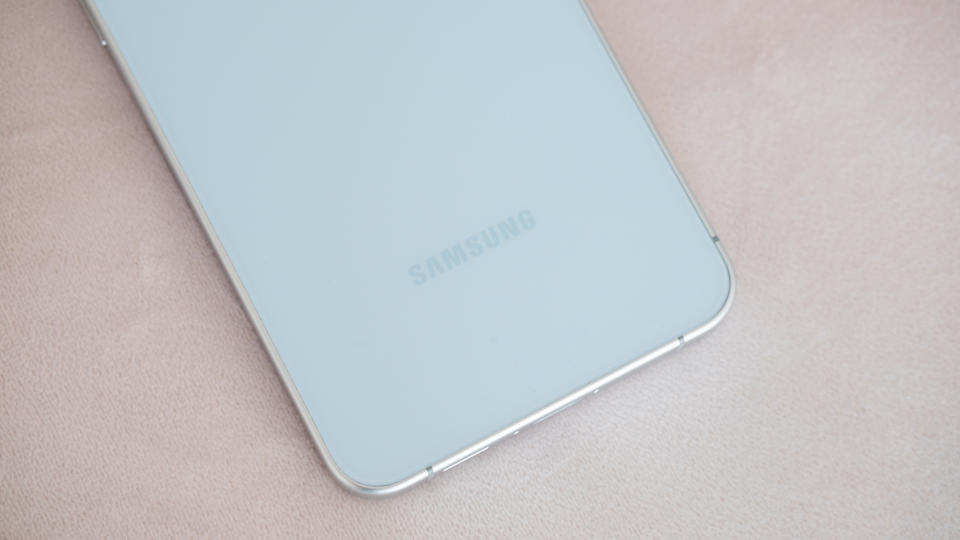
Circle to Search is useful, but I could also live without it. And I can safely say the same for all of Samsung’s own AI features. For example, Transcript Assist was handy for turning voice memos into written notes, but it didn’t save me much time in the long run since I ended up editing most of what the software produced. I also don’t want to subject my friends to AI-generated texts courtesy of Chat Assist.
Most importantly, I can’t see myself paying for any of the FE’s AI features once they’re no longer free. In case you forgot, Samsung plans to monetize Galaxy AI. “Fees may apply to certain AI features at the end of 2025,” the company said in the press release announcing the S24 FE. If you’re in the market for a midrange device, the prospect of paying a subscription to use some of its features feels like a non-starter. I don’t know about you, but if I’m buying a budget phone, I want it to save me over the long run, not cost me more after a year or two.
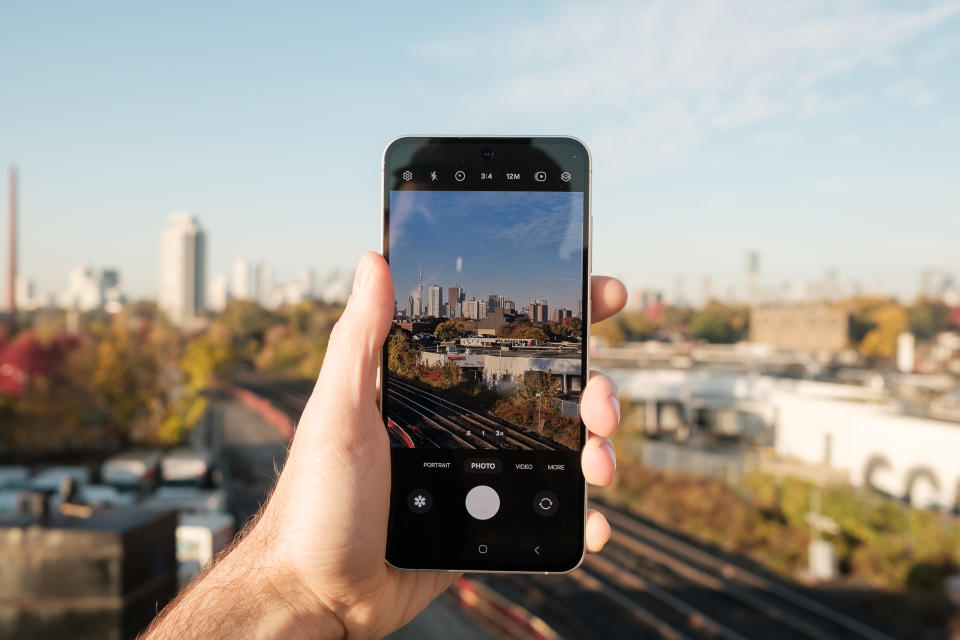
Wrap-up
In a vacuum, the Galaxy S24 FE is a great all-around phone and would be an easy recommendation if the S24+ didn’t exist or had Samsung released the two devices at the same time. At $650 for the base 128GB model and $710 for 256GB, the FE isn’t substantially cheaper than the S24+, especially when you consider the Plus comes with 256GB of storage by default and has already been reduced by as much as $150 off in recent months. If you want a discount S24+, you’re better off just waiting for that phone to go on sale.
The S24 FE is in an even weirder spot compared to the best midrange phones you can buy right now. Yes, it has a larger screen and an extra camera over our current top pick, the $499 Pixel 8a. However, for most people, I don’t think those upgrades warrant spending an extra $150. If you’re looking to get the most phone for as little money as possible, the S24 FE is not it.
I’m sure Samsung will adjust the price before long, but for now, this Fan Edition device doesn’t have a clear audience.
Source: www.engadget.com

